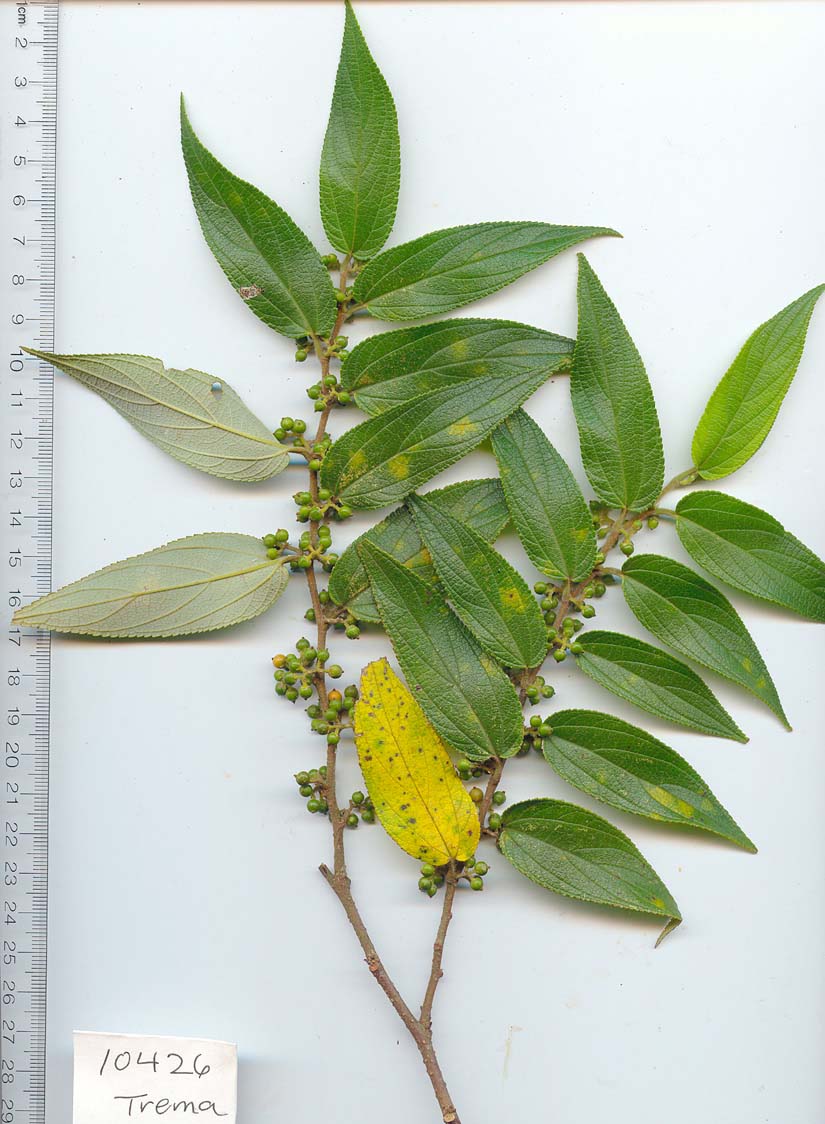Trema
|
Family: Cannabaceae |
Trees or shrubs , spindly, to 15 m; crowns variable. Bark dark brown or gray brown, smooth, shallowly furrowed, sometimes sometimes appearing warty with large, raised lenticels. Branches unarmed, stout; twigs hoary tomentose. Leaves: stipules ephemeral. Leaf blade: ovate, base oblique to cordate or truncate, margins crenate to serrate; venation palmate at base, pinnate on remainder of blade. Inflorescences cymes, compact to lax, 12-20-flowered. Flowers mostly unisexual, usually staminate and pistillate on same plants, appearing after leaves on new stems, in 1 series, pedicellate; calyx 5-parted. Bisexual flowers , if present: pedicel present; ovaries ± globose; styles persistent, 2, glabrous; stigmas 2, unbranched. Staminate flowers: nearly sessile; pistillodes present. Pistillate flowers: pedicel present; staminodes absent. Fruits drupes, globose, fleshy. Stones thick walled. Trema cannabina Loureiro and T . orientalis (Linnaeus) Blume, sometimes reported for North America, are Old World species occasionally planted but not known to have escaped from cultivation. Trema species are fast-growing pioneer trees with economically important alkaloids. Trema is a member of the subfamily Celtoideae. Species are locally called nettletrees in reference to their superficial resemblance to members of the Urticaceae. Further studies of variation in this group are needed in the field and in the laboratory, giving special consideration to the morphologic variants within Trema micrantha .
|

